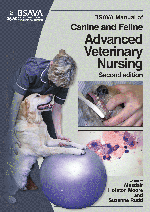
Full text loading...

Physiotherapy is involved with physical function, and physiotherapists regard movement and physical potential to be central to the health and well being of individuals. It is a ‘hands-on’ science-based healthcare profession concerned with the assessment, diagnosis and treatment of disease and disability through physical means. It is based upon the principles of medical science, and is generally held to be within the sphere of conventional (rather than alternative) medicine. Human physiotherapy is an internationally recognized discipline, and the positive benefits of physiotherapeutic intervention have been well documented. This chapter explains Veterinary physiotherapy; Legal restrictions; Role of the veterinary nurse; Indications for physiotherapy; Modalities and techniques; Physiotherapy in specific situations;
Physiotherapy and rehabilitation, Page 1 of 1
< Previous page | Next page > /docserver/preview/fulltext/10.22233/9781905319725/9781905319725.4-1.gif

Full text loading...































